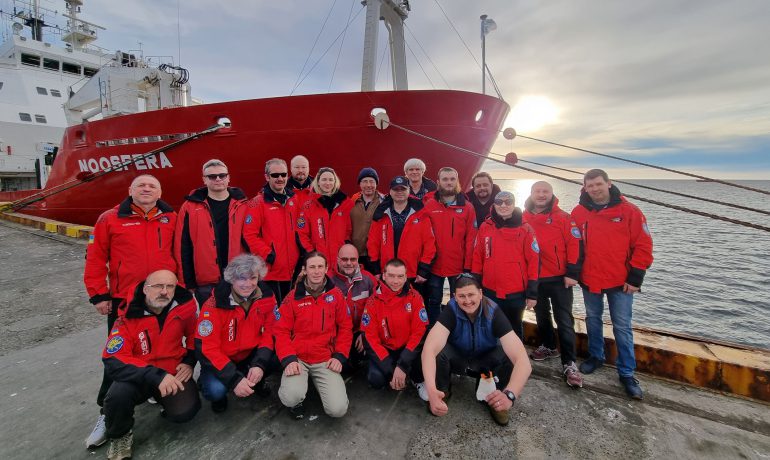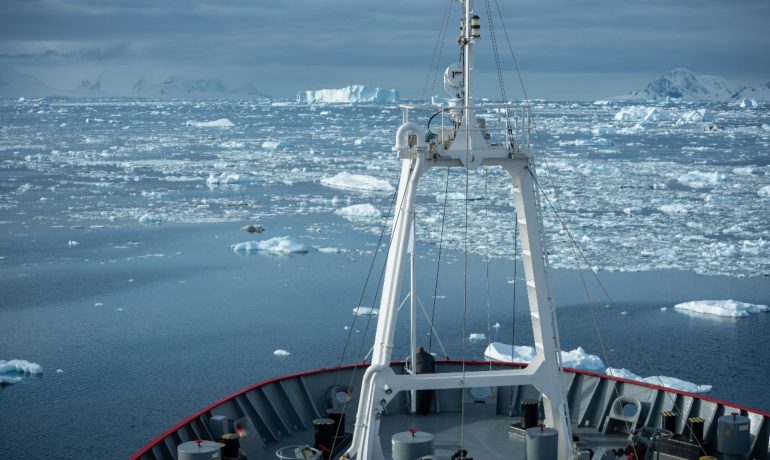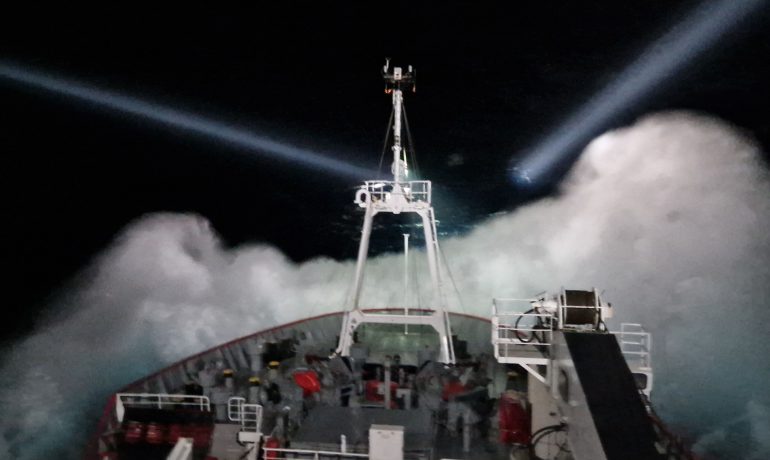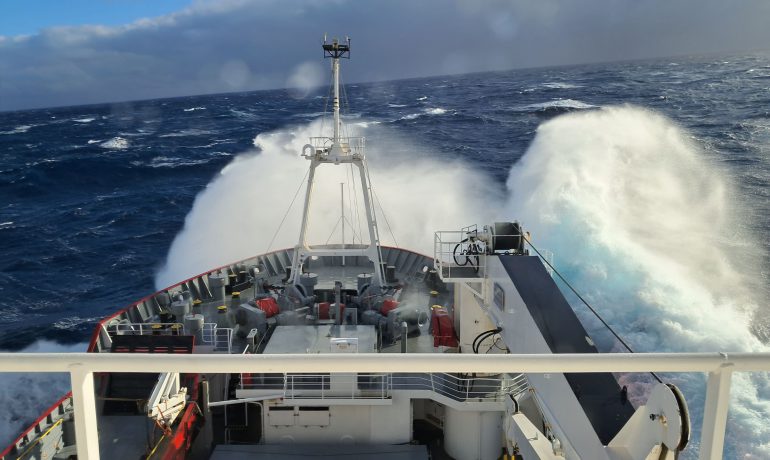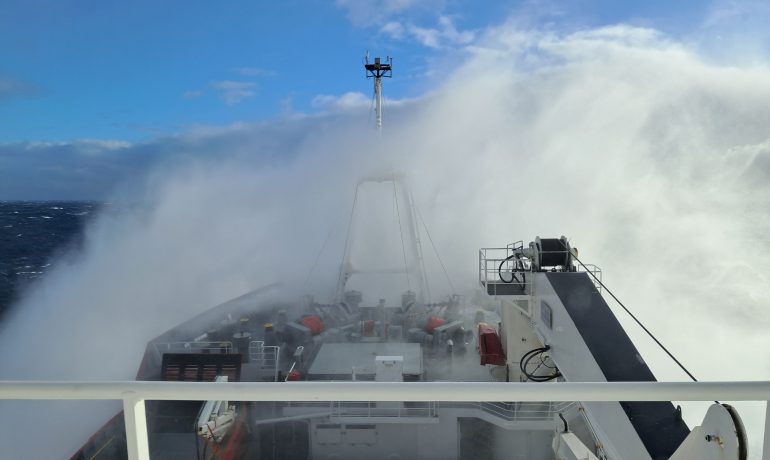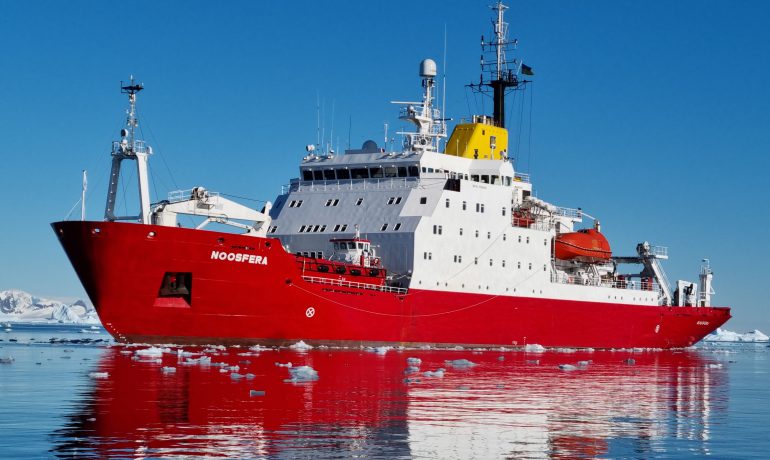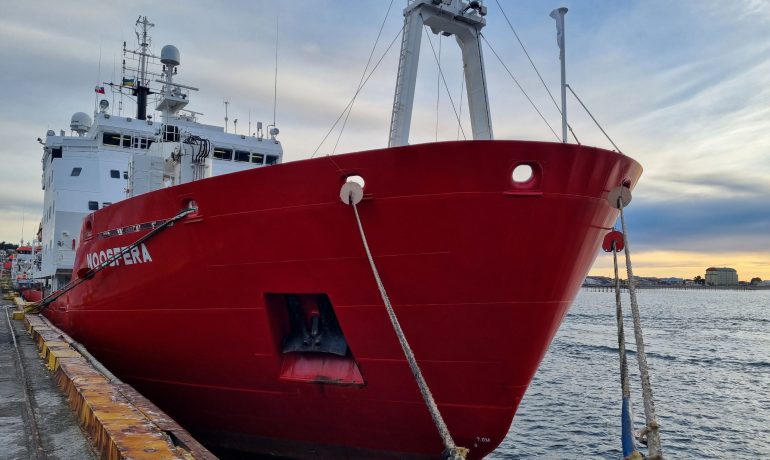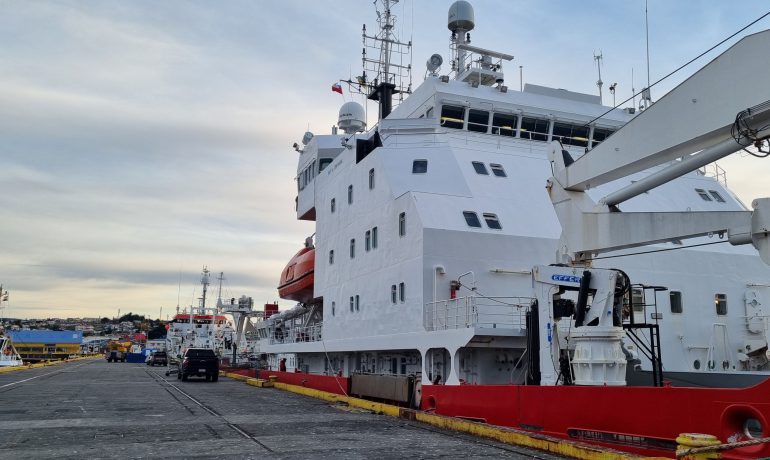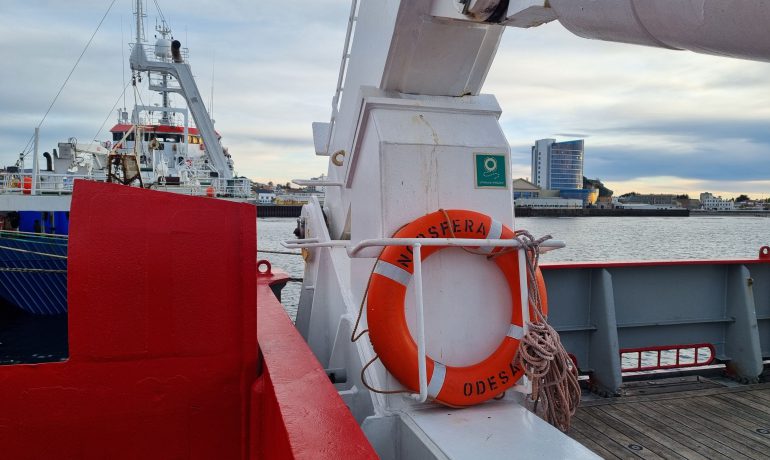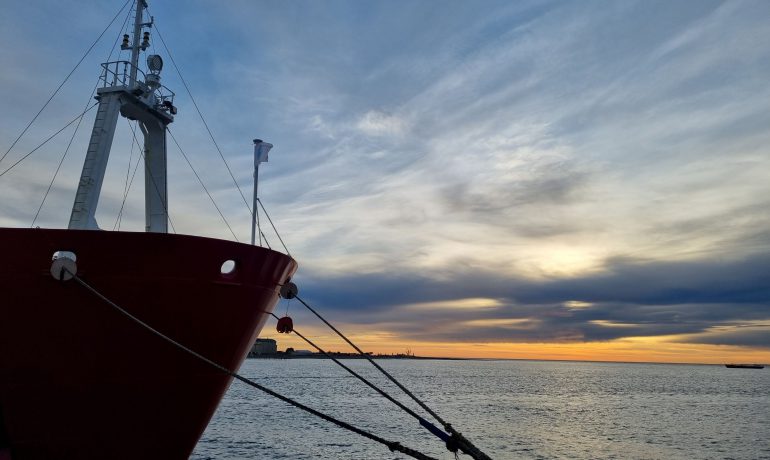The Ukrainian research vessel Noosfera made another Antarctic voyage this season. Today, April 13, 2024, our flagship docked in the port of Punta Arenas.
The road from Akademik Vernadsky station to Chile was 1,140 miles (2,111 km) long and took 9 days. For three days Noosfera passed through the Drake Passage, which this time was very restive. The height of the waves reached 9-10 meters, and the wind speed was 30 m/s.
According to captain Pavel Panasiuk, it was one of the stormiest Drakes during the entire time the vessel was operating under the Ukrainian flag. It is quite difficult to go in such conditions, but our crew coped with this challenge.
Noosfera delivered participants of two Ukrainian Antarctic expeditions to Punta Arenas:
- winter – 28th UAE, which worked for a year at Vernadsky;
- seasonal, which performed tasks at the station for several months
Also, while the ship was in Antarctica, biological, geological and geophysical studies of the Southern Ocean were carried out from its board, in particular, within the framework of international projects
Shortly Noosfera will again go to Antarctica to ensure the rotation of polar explorers at Polish Arctowsky station. This is already the third year of fruitful cooperation between Ukrainian and Polish Antarctic programs: since the beginning of the full-scale invasion of the Russian Federation, Poland has refused the services of Russian vessels.
Then, the icebreaker will return to the port of Cape Town (South Africa), where it will stay until the next Antarctic season.
We remind you that the third Antarctic season of Noosfera is currently underway. It began on November 17, 2023, when the ship left the port of Cape Town for the icy continent. Cargo and expeditions were delivered to Arctowsky and Vernadsky stations.
The second voyage of this season started on March 15, 2024, when the ship departed from the port of Punta Arenas to Vernadsky for a rotation of annual station expeditions as well as research in the Southern Ocean.
Previously we have talked about the study of bottom sediments and marine fauna.
Photo: Anna Torgonenko, Anatolii Andreiev, Yuliia Kryvytska


